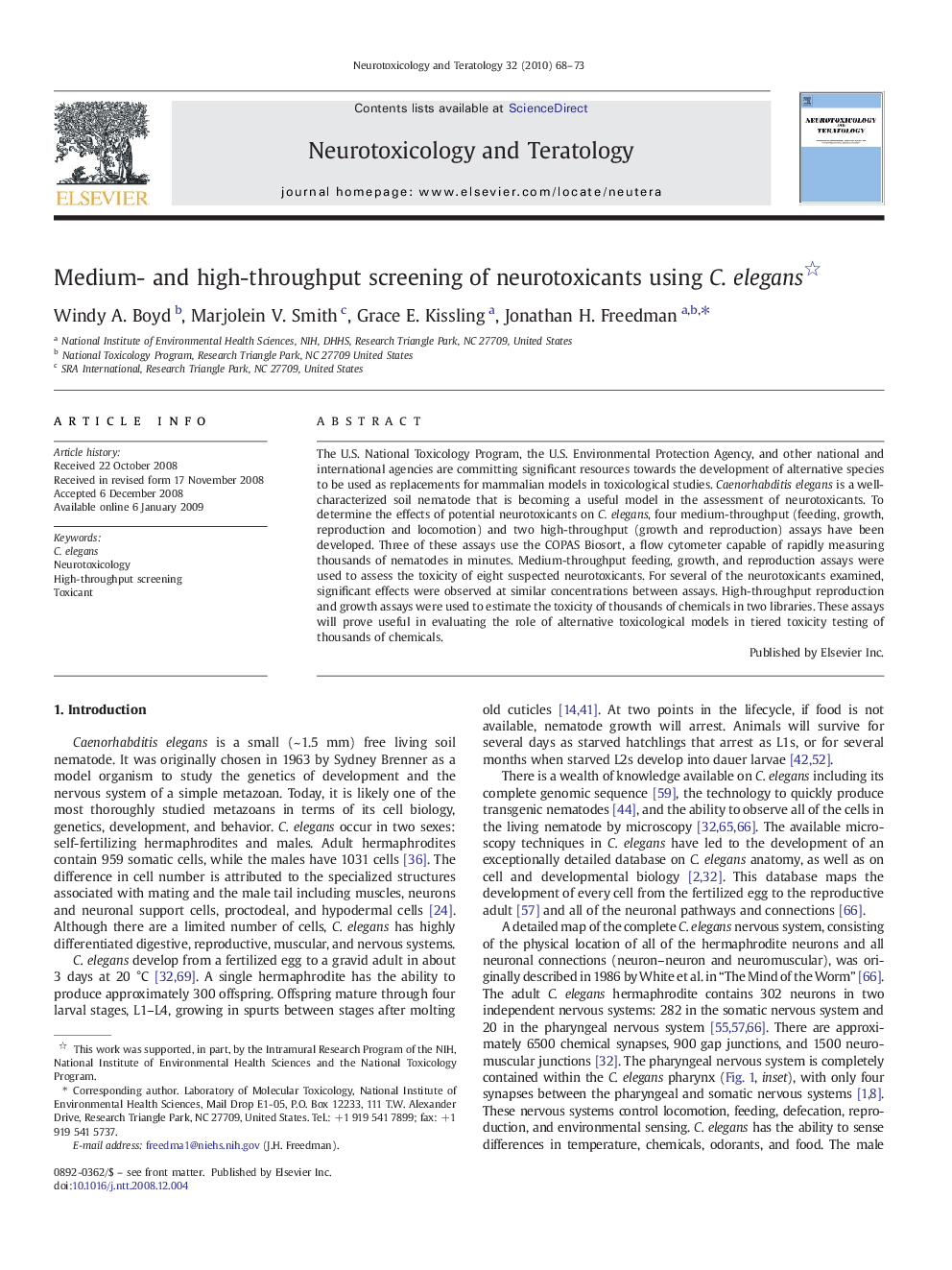| Article ID | Journal | Published Year | Pages | File Type |
|---|---|---|---|---|
| 2591571 | Neurotoxicology and Teratology | 2010 | 6 Pages |
The U.S. National Toxicology Program, the U.S. Environmental Protection Agency, and other national and international agencies are committing significant resources towards the development of alternative species to be used as replacements for mammalian models in toxicological studies. Caenorhabditis elegans is a well-characterized soil nematode that is becoming a useful model in the assessment of neurotoxicants. To determine the effects of potential neurotoxicants on C. elegans, four medium-throughput (feeding, growth, reproduction and locomotion) and two high-throughput (growth and reproduction) assays have been developed. Three of these assays use the COPAS Biosort, a flow cytometer capable of rapidly measuring thousands of nematodes in minutes. Medium-throughput feeding, growth, and reproduction assays were used to assess the toxicity of eight suspected neurotoxicants. For several of the neurotoxicants examined, significant effects were observed at similar concentrations between assays. High-throughput reproduction and growth assays were used to estimate the toxicity of thousands of chemicals in two libraries. These assays will prove useful in evaluating the role of alternative toxicological models in tiered toxicity testing of thousands of chemicals.
